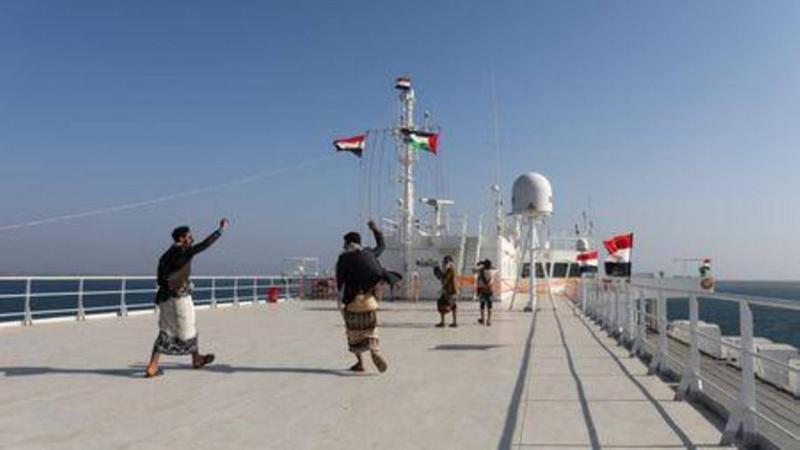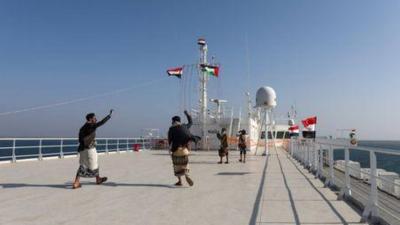The Houthis in Yemen have targeted ships in the southern Red Sea and the Bab al-Mandab Strait in attacks they claim are aimed at supporting the Palestinians amid the ongoing war between Israel and Hamas. On Tuesday, the Houthis announced that they had carried out a military operation against a Norwegian cargo ship in the Red Sea, with the group's spokesman pledging to continue blocking vessels heading to Israeli ports until Israel allows food and medical aid to Gaza.
- **Recent Houthi Attacks:**
* December 12: The Houthi spokesman announced that the group targeted the Norwegian cargo ship Strinda. An American official told Reuters that the attack occurred approximately 111 kilometers north of the Bab al-Mandab Strait.
* December 9: The Houthis warned that they would target all ships heading to Israel regardless of their nationality, cautioning global shipping companies against dealing with Israeli ports.
* December 3: The U.S. military reported that three commercial ships were attacked in international waters in the southern Red Sea, with the Houthis claiming responsibility for drone and missile attacks on two Israeli vessels in the area.
* November 19: Israel stated that the Houthis had seized a British-owned, Japan-managed cargo ship in the southern Red Sea.
- **What is Bab al-Mandab?**
Bab al-Mandab is the outlet of the Red Sea to the Indian Ocean, situated between Yemen on the Arabian Peninsula and Djibouti and Eritrea on the African coast. The strait is one of the most important maritime routes for global shipping, especially for crude oil and fuel from the Gulf heading to the Mediterranean Sea via the Suez Canal or the Sumed pipeline, as well as goods destined for Asia, including Russian oil.
The strait witnessed a naval blockade imposed by Egypt on Israel during the October War in 1973. Bab al-Mandab is 30 kilometers wide at its narrowest point, making tanker movement challenging and limited to two channels for incoming and outgoing shipments, separated by the island of Perim.
Approximately 7.80 million barrels per day of crude oil and fuel shipments traversed the strait in the first 11 months of 2023, up from 6.60 million barrels per day throughout 2022, according to oil analytics firm Vortexa. Vortexa recorded an average of 27 tankers carrying crude or fuel passing through daily in 2023, an increase from 20 the previous year.
The Energy Information Administration reported that 12% of the total seaborne oil transported in the first half of 2023 and 8% of liquefied natural gas trade passed through Bab al-Mandab, the Sumed pipeline, and the Suez Canal.




